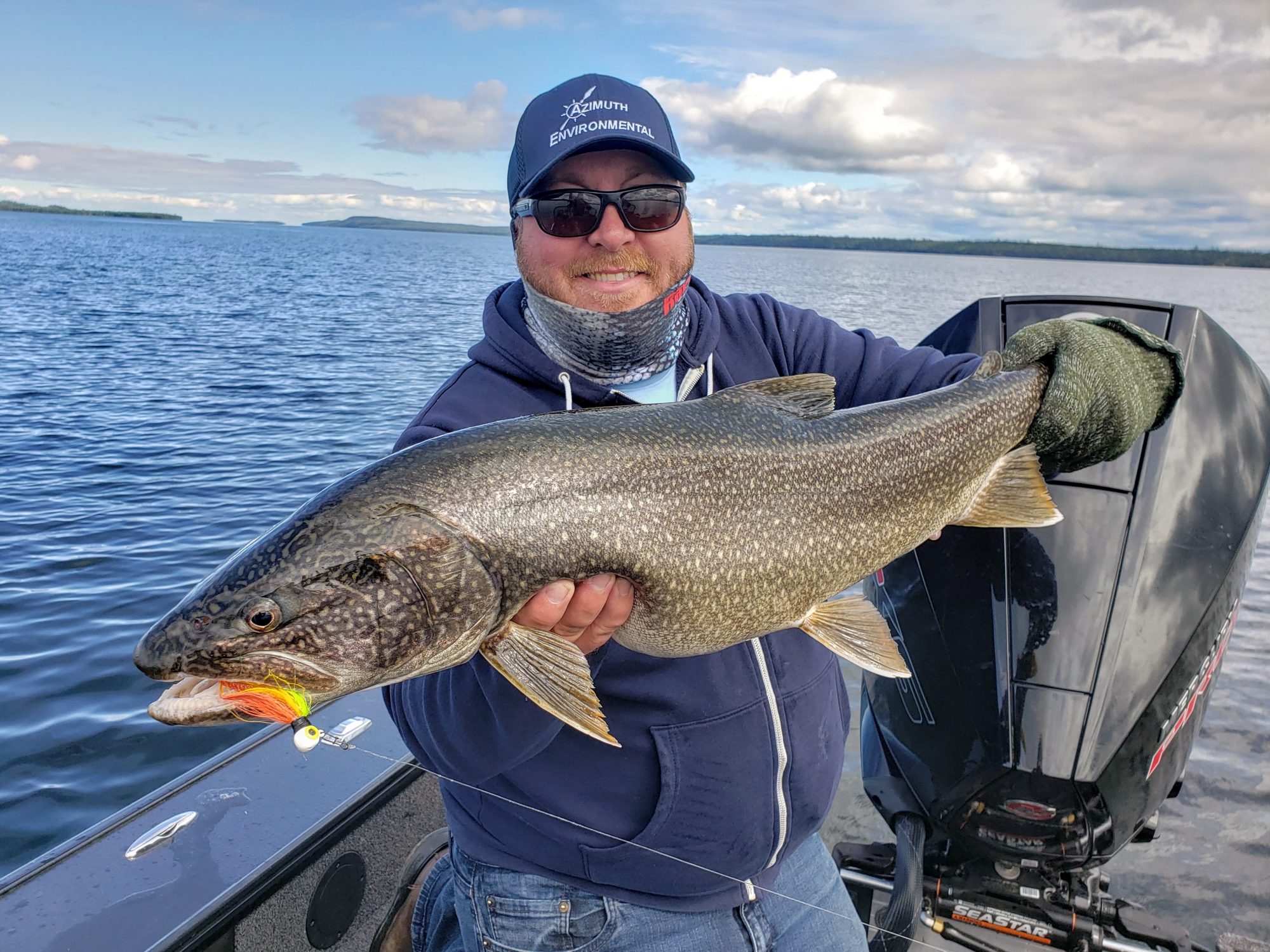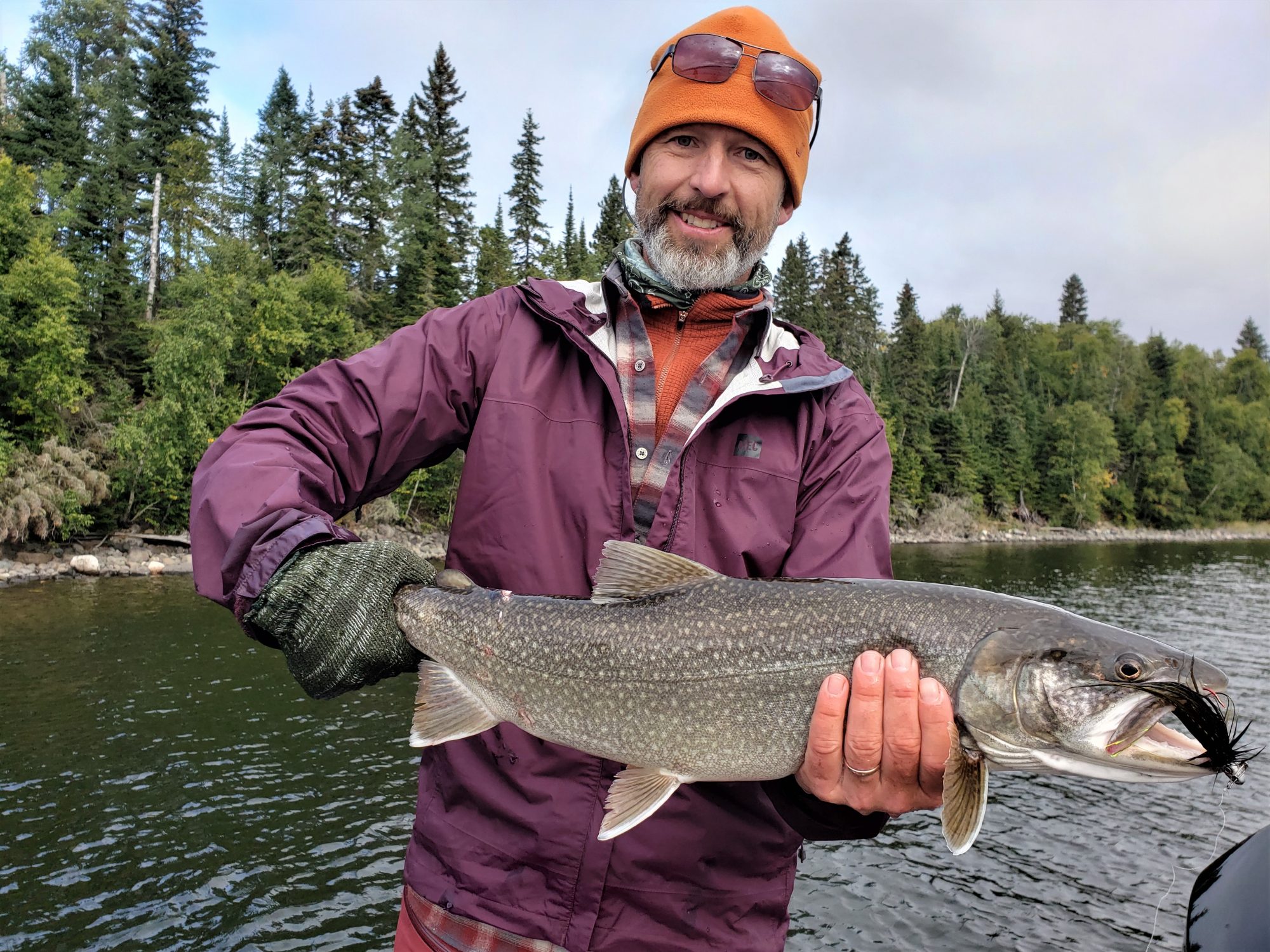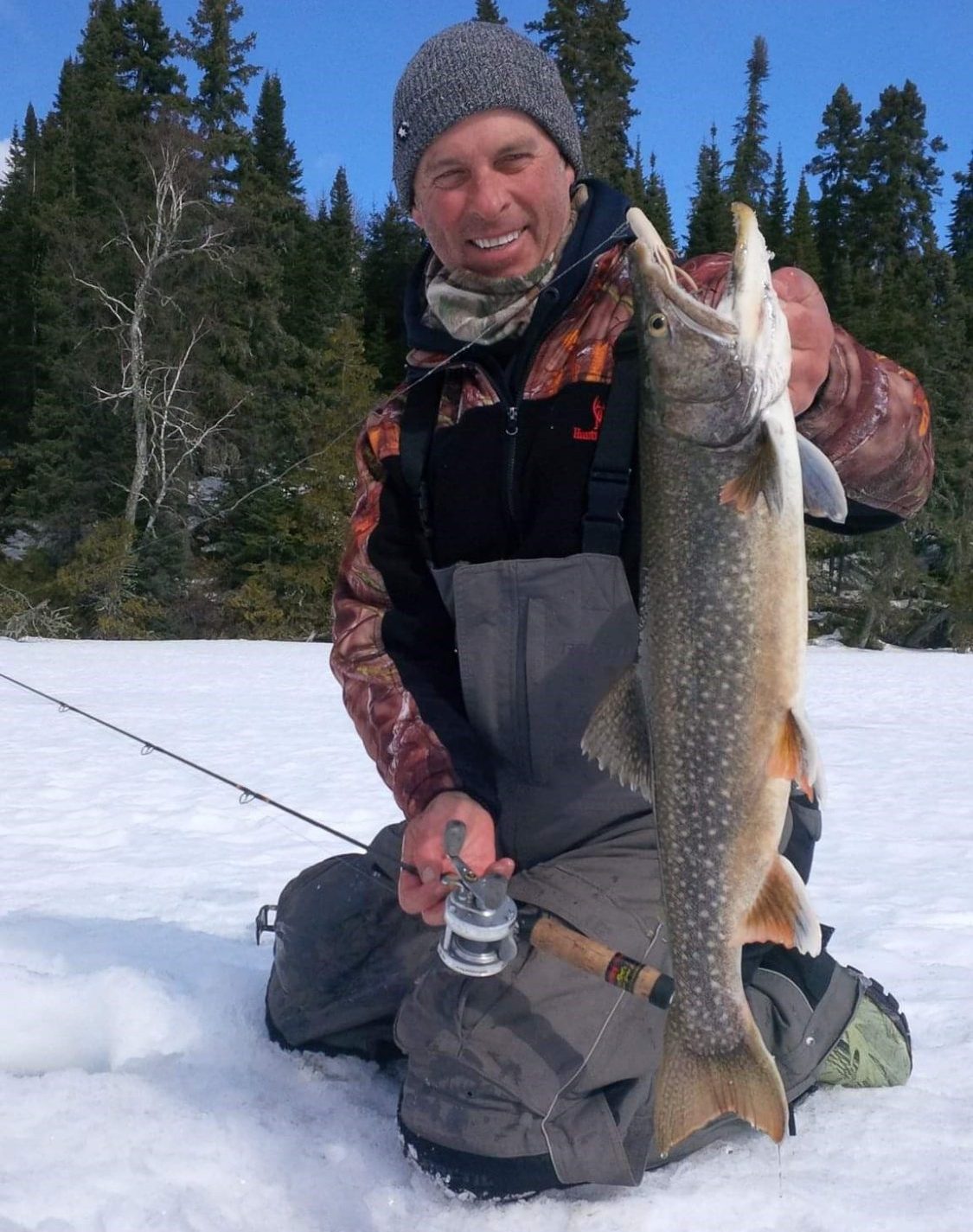Native to Ontario, Lake Trout are sought after by many anglers due to the mass sizes they can reach. Superior Country is a well known destination to make anglers Lake Trout dreams come true due to the abundance of opportunity. Lake Nipigon is the best fishery in Ontario for these elusive giants, possibly the best in Canada. Due to the size, depth and cool temperatures, anglers from around the world – as well as the locals – cherish the lake for the giants it beholds beneath the surface.

1. Scientific Name
Lakers, Lake Charr, Grey Trout, Mackinaw and a range of other names all refer back to Lake Trout. However their scientific name is Salvelinus Namaycush and they’re a close relative to that of the Brook Trout.
2. Life Span
In their natural wild habitat they live 10-20 years, drastically longer than Brook Trout. While 20 years in itself is long, there are reports of Lake Trout living to a whopping 60 years of age! It’s clear why they can reach such dramatic sizes.

3. Lake Trout Size
Having such a long lifespan gives them plenty of opportunity to grow to truly enormous sizes. In Lake Nipigon, where conditions are merely perfect for their growth and health, they commonly range between the 12-15 pound mark. Many anglers have reeled in 20 pound Lakers, all the way up to 30-35 pound giants.
Related Article: 10 Brook Trout Facts
4. Spawning
Alike their close relatives, Brook Trout, Lake Trout will spawn late September – mid December. However, unlike Brookies, they don’t prefer to spawn in rivers, although it does happen, they are more commonly known to spawn in lakes that have a rocky, boulder bottom. They eggs usually end up in cracks and seems between rocks where they’ll incubate over the winter and hatch early spring, typically March or April. Considering they are cold water dwellers, they spawn in water temperatures between 8- 13 °C (48-57 F).

5. Habitat
As previously mentioned, they are cold water dwellers and also strive clear water. Requiring cold water but not favoring rivers means they’re found in deep lakes where they can retreat to deeper, colder temperatures come summer. It is rare to find a healthy Lake Trout population in lakes that’re shallower than 50 feet (15 meters), hence why Lake Nipigon with it’s maximum depth of 540 feet (165 meters) is a perfect body of water for Lakers. In the spring when the water is cold Lake Trout stay at trolling depths, when summer comes and water temperature peaks, 20-40 feet of water suits their needs better.

6. Diet
Their food sources highly depend on the body of water they inhabit, corresponding to what is available to them. However, Lake Trout commonly feed on other fish species and aquatic insects. This includes, but is not limited to: smelt, whitefish and other juvenile fish species, water beetles, worms, leeches etc.

7. Bait & Lures
Depending on the time of year depends on the bait and technique to use. When the water is first opening up from ice melt and they remain shallow, using spinners with flashy colors is optimal. Once they move deeper, whether it’s trolling or downrigging depth, spoons are among the best lures to reach for. Common brands are Lucky Stride, Eppinger and Len Thompson. P.S everyone has had luck on a yellow and red Five of Diamonds! While trolling, Flatfish and Kwikfish are fan favorites! T-55 Flatfish are great examples. What makes the Flatfish and Kwikfish so irresistible to Lakers are the swim patterns, they have a wobble/bounce as they troll through the water making them noticeable. Flashy colors are always a no brainer for Lake Trout!

8. Appearance
While Lake Trout are not as flashy and vibrant as Brook Trout, they do encompass their own unique beauty. They can be light in color from silver and olive green to dark green, brown and merely black on the top sections of their back. Lakers always have a lighter colored belly, usually cream/white. Their fins are similar to the Brook Trout in terms of having the white outline on the ends of the fin, but do not have the black thin strip that divides the white between the reddish/orange color. Their side mid section is scattered with pale spots.

9. Lake Trout + Brook Trout = ?
Have you ever heard of a Splake? It is also a cold water dweller species that was introduced and naturalized in Ontario. A Splake is a cross between the Lake Trout and Brook Trout. They were stocked throughout Ontario in water conditions that suit Lakers better than Brookies. They do not reach the impressive Lake Trout sizes, however do get up to 10-12 pounds in proper conditions.

Related Article: Fall Splake Fishing
10. Ontario Lake Trout Record
The current Ontario record for Lake Trout is 63.1 pounds. A true water giant!












































